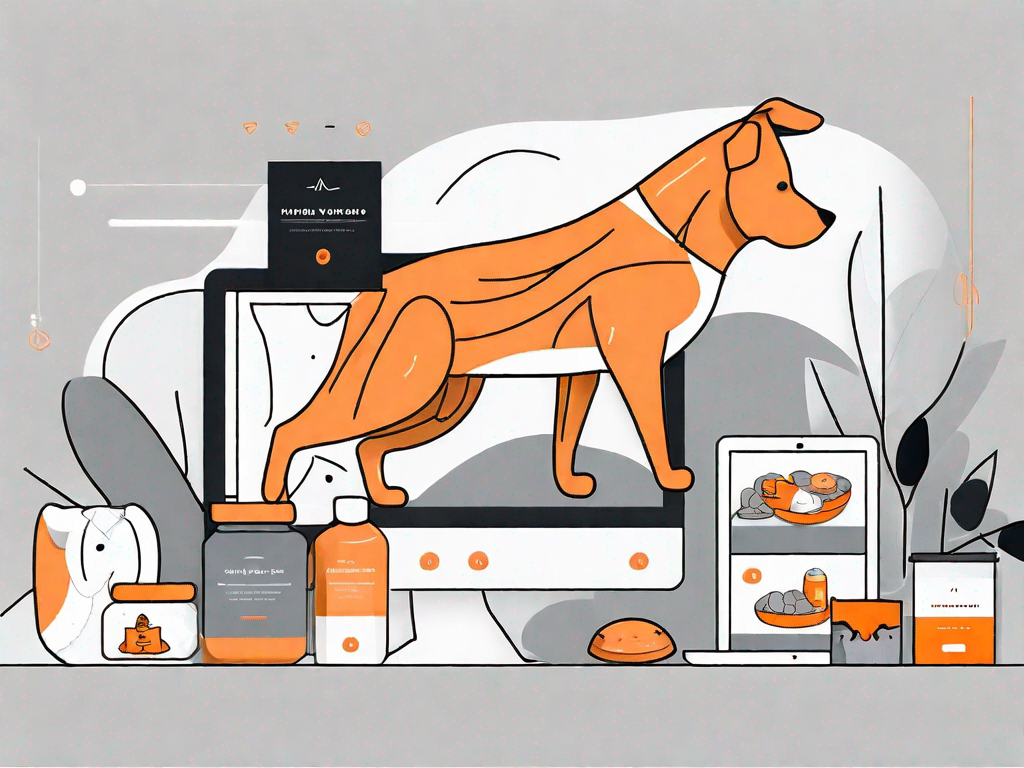.svg)
Transforming Customer Journeys with Hyper-Personalisation
.svg)

In today's rapidly evolving digital landscape, businesses are increasingly recognising the importance of delivering personalised experiences to their customers. Hyper-personalisation takes this concept to the next level by leveraging advanced technologies and data analytics to create highly tailored customer journeys. This approach not only enhances customer satisfaction but also drives engagement and loyalty, making it a crucial strategy for businesses aiming to thrive in a competitive market.
Understanding Hyper-Personalisation
What is Hyper-Personalisation?
Hyper-personalisation is the process of using real-time data and advanced analytics to deliver highly relevant and individualised experiences to customers. Unlike traditional personalisation, which might involve addressing a customer by their first name in an email, hyper-personalisation delves deeper into customer behaviour, preferences, and interactions across multiple channels. By analysing this data, businesses can create bespoke experiences that resonate with each customer on a personal level.
The rise of big data and artificial intelligence has significantly contributed to the feasibility of hyper-personalisation. These technologies enable businesses to process vast amounts of data quickly and efficiently, uncovering insights that were previously unattainable. As a result, companies can now anticipate customer needs and preferences with remarkable accuracy, delivering content, products, and services that are perfectly aligned with individual expectations.
The Importance of Hyper-Personalisation
In an era where consumers are inundated with information and choices, standing out from the crowd is more challenging than ever. Hyper-personalisation offers a solution by ensuring that each interaction a customer has with a brand is meaningful and relevant. This level of personalisation not only captures the customer's attention but also fosters a deeper emotional connection with the brand.
Moreover, hyper-personalisation can significantly impact a company's bottom line. By offering tailored experiences, businesses can increase conversion rates, reduce churn, and boost customer lifetime value. Customers are more likely to engage with a brand that understands their needs and preferences, leading to increased sales and long-term loyalty.
Implementing Hyper-Personalisation in Customer Journeys
Data Collection and Analysis
The foundation of hyper-personalisation lies in the effective collection and analysis of customer data. Businesses must gather data from various sources, including website interactions, social media activity, purchase history, and customer feedback. This data provides valuable insights into customer behaviour and preferences, enabling businesses to tailor their offerings accordingly.
Advanced analytics tools play a crucial role in processing and interpreting this data. Machine learning algorithms can identify patterns and trends, allowing businesses to predict future customer behaviour and personalise experiences in real-time. By continuously analysing data, companies can refine their strategies and ensure that their personalisation efforts remain relevant and effective.
Creating Personalised Content
Once businesses have a comprehensive understanding of their customers, they can begin creating personalised content that resonates with individual preferences. This might include personalised product recommendations, targeted marketing messages, and customised user interfaces. By delivering content that is relevant and engaging, businesses can capture the attention of their audience and encourage further interaction.
Personalised content should be delivered across multiple channels to ensure a seamless customer experience. Whether through email, social media, or mobile apps, businesses must ensure that their messaging is consistent and cohesive. This omnichannel approach ensures that customers receive a unified experience, regardless of how they choose to interact with the brand.
Using Technology for Hyper-Personalisation
Technology is at the heart of hyper-personalisation, enabling businesses to deliver highly tailored experiences at scale. Artificial intelligence and machine learning are particularly valuable, as they allow companies to process large volumes of data and generate insights in real-time. These technologies can also automate personalisation efforts, ensuring that each customer receives a unique experience without requiring extensive manual intervention.
In addition to AI and machine learning, businesses can leverage other technologies such as chatbots and virtual assistants to enhance personalisation efforts. These tools can provide personalised recommendations, answer customer queries, and guide users through their journey, all while collecting valuable data that can be used to further refine personalisation strategies.
Challenges and Considerations
Data Privacy and Security
While hyper-personalisation offers numerous benefits, it also raises important considerations regarding data privacy and security. As businesses collect and analyse vast amounts of customer data, they must ensure that this information is handled responsibly and in compliance with relevant regulations. This includes obtaining explicit consent from customers and implementing robust security measures to protect sensitive data.
Transparency is also crucial in building trust with customers. Businesses should clearly communicate how customer data is being used and provide options for individuals to control their data preferences. By prioritising privacy and security, companies can foster trust and loyalty among their customer base.
Balancing Personalisation with Customer Experience
While personalisation is a powerful tool, it is essential to strike the right balance to avoid overwhelming customers. Overly aggressive personalisation efforts can lead to a sense of intrusion, causing customers to feel uncomfortable or even alienated. Businesses must ensure that their personalisation strategies enhance the customer experience without crossing the line into invasiveness.
To achieve this balance, companies should focus on delivering value through personalisation. By offering relevant and meaningful experiences, businesses can enhance customer satisfaction and build long-lasting relationships. Regularly soliciting feedback from customers can also help businesses gauge the effectiveness of their personalisation efforts and make necessary adjustments.
The Future of Hyper-Personalisation
Emerging Trends and Technologies
The future of hyper-personalisation is bright, with emerging technologies poised to further enhance the capabilities of businesses. The integration of augmented reality and virtual reality into personalisation strategies is one such trend, offering immersive and interactive experiences that captivate customers. These technologies can provide virtual try-ons, personalised tours, and more, creating unique and memorable customer journeys.
Additionally, the rise of the Internet of Things (IoT) presents new opportunities for hyper-personalisation. Connected devices can collect real-time data on customer behaviour and preferences, enabling businesses to deliver personalised experiences that are contextually relevant. As IoT technology continues to evolve, the potential for hyper-personalisation will only grow, offering exciting possibilities for businesses and consumers alike.
Preparing for the Future
To stay ahead of hyper-personalisation, businesses must remain agile and adaptable. This involves continuously monitoring industry trends, investing in new technologies, and refining personalisation strategies to meet changing customer expectations. By staying proactive and innovative, companies can ensure that they are well-positioned to deliver exceptional customer experiences in the future.
Ultimately, the key to successful hyper-personalisation lies in understanding and anticipating customer needs. By applying both data and technology to create personalised experiences, businesses can transform customer journeys and build lasting relationships with their audience. As the digital landscape continues to evolve, hyper-personalisation will remain a vital strategy for businesses seeking to thrive in a competitive market.
Related Posts
Let's
Let’s discuss how we can bring reinvigorated value and purpose to your brand.







.svg)